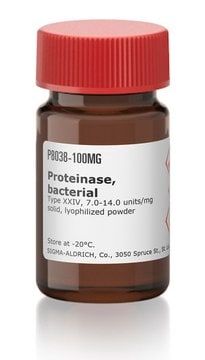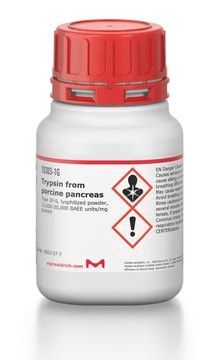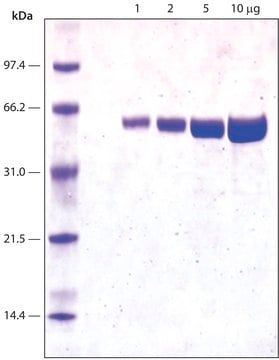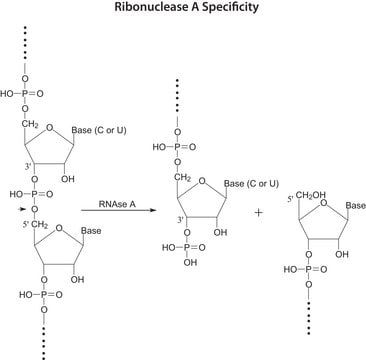B20221
Collagenase-DNase I blend
Tissue dissociation blend, lyophilized powder, suitable for cell culture
Manufacturer: Sigma Aldrich
Select a Size
| Pack Size | SKU | Availability | Price |
|---|---|---|---|
| 1 VIAL | B20221-1-VIAL | In Stock | ₹ 13,131.30 |
B20221 - 1 VIAL
In Stock
Quantity
1
Base Price: ₹ 13,131.30
GST (18%): ₹ 2,363.634
Total Price: ₹ 15,494.934
Quality Level
200
form
lyophilized powder
specific activity
(Collagenase (FALGPA assay) 1.0-5.0 units/ml in 10 ml HBSS (#H6648)) (Deoxyribonuclease I activity: 200-2000 Kunitz units/ml in 10 ml HBSS (#H6648))
storage temp.
-10 to -25°C
Description
- General description: The collagenase-DNase I blend is a tissue dissociation enzyme cocktail for cell isolation. The tissue dissociation process consists in the release of functional and viable cells from animal tissue, with minimal impact on the cell’s viability. The main reagent used for the tissue dissociation process is Collagenase. Collagenases are enzymes that break down the native collagen that holds animal tissues together. The second enzyme found in our blend is Deoxyribonuclease I (DNase I). DNase I, is an endonuclease of the DNase family, with a specific role for the degradation of DNA. DNase I is one of the most well characterized endonucleases of mammalian origin. During tissue dissociation, parts of the cells are lysed resulting in a release of DNA. Monomolecular DNA may cause clumping of cells, so addition of DNase I to our blend leads to a degradation of this extracellular DNA, thereby avoiding the loss of cells from undesired clumping.
- Biochem/physiol Actions: Collagenase: Effective release of cells from tissue requires the action of collagenase enzymes. Collagenase is activated by four-gram atom calcium (Ca2+) per mole enzyme. The pH optimum is 6.3-8.8. The enzyme is typically used to digest the connective components in tissue samples to liberate individual cells. Collagenase treatment can cause some cells to die. Typically, concentrations varying from 0.1 to 5 mg/mL are used for digestion. The duration of reaction varies from 15 minutes to several hours and yields satisfactory cell dissociation without causing too much cell death. DNase: DNase I is an endonuclease that acts on phosphodiester bonds adjacent to pyrimidines to produce polynucleotides with terminal 5′-phosphates. In the presence of Mg2+, DNAse I cleaves each strand of DNA independently and the cleavage sites are random. Both DNA strands are cleaved at approximately the same site in the presence of Mn2+. The pH optimum is found to be between 7 and 8. Divalent cations such as Mn2+, Ca2+, Co2+, and Zn2+ are activators of the enzyme. A concentration of 5 mM Ca2+ stabilizes the enzyme against proteolytic digestion. DNAse I from bovine pancreas consists of four chromatographically distinguishable components, A, B, C, and D, with their molar ratios being 4:1:1. Only minor amounts of D are found. 2-Mercaptoethanol, chelators, sodium dodecyl sulfate (SDS) and actin are known to inhibit the enzyme activity.
- Preparation Note: For a working concentration of: Collagenase of 1 mg/ml and Deoxyribonuclease I of 0.1 mg/ml, reconstitute the lyophilized powder with 10 ml of Hank’s Balanced Salt solution with sodium bicarbonate, without phenol red, calcium chloride and magnesium sulfate (#H6648)
SAFETY INFORMATION
Pictograms
Signal Word
Danger
Hazard Statements
Precautionary Statements
Hazard Classifications
Resp. Sens. 1
WGK
WGK 3
Flash Point(F)
Not applicable
Flash Point(C)
Not applicable




